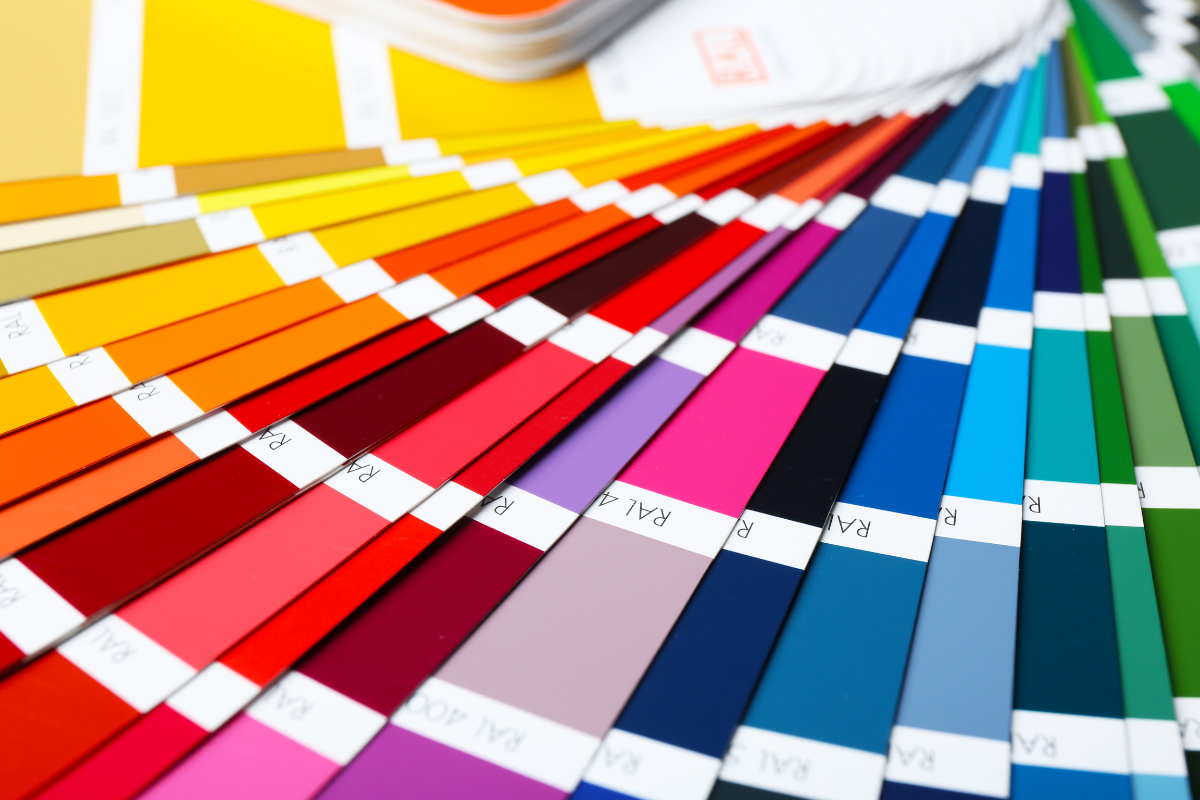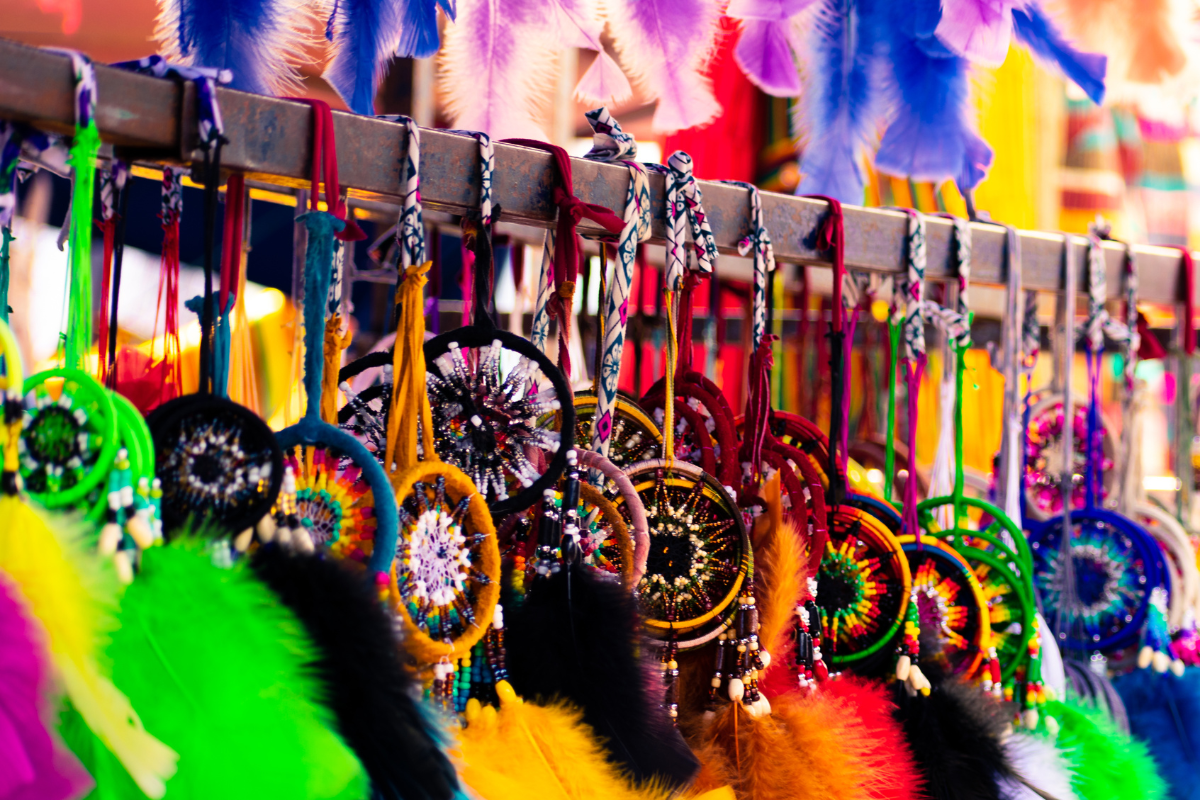Have you ever wondered why certain colors have such a profound impact on our purchasing decisions? From the vibrant red of Coca-Cola to the calm blue of Facebook, color plays an integral role in shaping consumer behavior. It goes beyond mere aesthetics and taps into the depths of our subconscious, triggering emotions, influencing perceptions, and ultimately swaying our buying decisions.
In this blog post, we will delve into the inner workings of the psychology of color in marketing, exploring how different colors elicit specific responses from consumers. So, buckle up and join us on this enthralling journey as we explore the mysterious world of color psychology. Prepare to uncover the secrets behind the use of color in marketing and how it can influence consumer behavior in ways you never imagined.
The Colorful Key To Marketing Success
The Impact Of Color On Consumer Behavior

Color plays a crucial role in influencing consumer behavior. Understanding the psychology of color in marketing can help businesses make strategic decisions to attract and engage their target audience. Here are some key points to consider:
- Red: Associated with energy and urgency, red can create a sense of excitement and stimulate impulse buying. It is often used in clearance sales or limited-time offers to grab attention.
- Blue: Considered a color of trust and dependability, blue is commonly used by banks and financial institutions. It evokes a feeling of security and reliability, making consumers more inclined to make a purchase.
- Green: Symbolizing growth, health, and nature, green is often used to promote eco-friendly products. It appeals to environmentally conscious consumers, creating a sense of trust and sustainability.
- Yellow: Known for its optimistic and cheerful qualities, yellow is attention-grabbing and can stimulate impulsive buying behavior. It is often used to highlight discounts or clearance sales.
- Orange: Combining the energy of red and the cheerfulness of yellow, orange is associated with enthusiasm and creativity. It can create a sense of urgency and encourage consumers to take action.
- Black: Often linked to luxury and sophistication, black is commonly used by high-end brands. It portrays a sense of exclusivity and elegance, attracting consumers looking for premium products or services.
- Purple: Symbolizing royalty and luxury, purple appeals to a creative and imaginative audience. It can be used to create a sense of luxury or uniqueness, making consumers feel special.
Understanding the impact of color on consumer behavior is essential for businesses to create effective marketing strategies. By utilizing the psychology of color, companies can attract and engage their target audience, ultimately driving sales and brand loyalty.
Creating Brand Identities Through Color
When it comes to creating brand identities, color plays a crucial role. The psychology of color in marketing has been extensively studied and proven to influence consumer behavior. By understanding the impact of different colors on our emotions and perceptions, businesses can strategically use color to build strong and memorable brand identities.
- Red: This vibrant color evokes strong emotions such as excitement, passion, and urgency. It grabs attention and is often associated with power and energy. Brands like Coca-Cola and Netflix use red to stand out and create a sense of excitement.
- Blue: Considered a calming and trustworthy color, blue is often used by brands to establish a sense of reliability and professionalism. Tech giants like IBM and Facebook incorporate blue into their brand identities to convey trustworthiness and stability.
- Yellow: Associated with happiness and optimism, yellow is an attention-grabbing color that stimulates positivity. Brands like McDonald’s and IKEA use yellow to create a cheerful and inviting atmosphere.
- Green: Green represents nature, growth, and peace. It is commonly used by brands related to health, sustainability, or eco-friendly products. Whole Foods Market and Tropicana utilize green to connect with consumers who prioritize a healthy lifestyle.
- Purple: Symbolizing luxury, creativity, and spirituality, purple is often used by brands targeting a sophisticated and upscale audience. Cadbury and Hallmark incorporate purple into their brand identities to convey elegance and exclusivity.
By understanding the psychology of color, businesses can strategically choose colors that align with their brand values and target audience. Whether it’s creating a sense of urgency or establishing trust, color plays a significant role in shaping brand identities and influencing consumer behavior.
Color Associations And Cultural Differences

When it comes to color associations, cultural differences play a significant role. The psychology of color in marketing is a fascinating subject that explores how colors can influence consumer behavior. Different cultures have unique interpretations and associations with colors, which can impact marketing strategies.
Here are some examples of color associations in different cultures:
- Red: In Western cultures, red is often associated with passion, love, and excitement. However, in some Eastern cultures, red symbolizes luck, prosperity, and celebration.
- White: In Western cultures, white is often associated with purity, innocence, and weddings. However, in some Asian cultures, white represents funerals and mourning.
- Yellow: In Western cultures, yellow is often associated with happiness, warmth, and energy. In some African cultures, yellow symbolizes wealth and fertility.
- Blue: In Western cultures, blue is often associated with trust, stability, and loyalty. However, in some Middle Eastern cultures, blue is associated with protection against evil and warding off the evil eye.
These examples highlight the importance of understanding cultural differences when using colors in marketing. A color that may be perceived positively in one culture could have a completely different meaning in another.
Color associations and cultural differences have a significant impact on marketing strategies. Marketers must consider the cultural context when choosing colors to ensure their message resonates positively with their target audience. By understanding the psychology of color and its cultural implications, marketers can create more effective and impactful marketing campaigns.
The Role Of Color In Advertising
Color plays a significant role in advertising, impacting consumer behavior and influencing purchasing decisions. Understanding the psychology of color in marketing is crucial for businesses to effectively communicate their brand message and attract their target audience.
- Brand Identity: Color is a powerful tool for creating brand identity and recognition. Consistent use of specific colors in advertisements helps consumers associate those colors with a particular brand. For example, the vibrant red color of Coca-Cola’s logo instantly grabs attention and evokes feelings of excitement and energy.
- Emotional Response: Different colors evoke different emotions and feelings in people. For instance, warm colors like red, orange, and yellow are often associated with energy, passion, and excitement. On the other hand, cool colors like blue and green may evoke feelings of calmness, trust, and reliability. Advertisers strategically use color to elicit specific emotional responses from their target audience.
- Call-to-Action: Colors can also influence consumer behavior by directing attention and encouraging action. Bright, contrasting colors are often used for call-to-action buttons or important information in advertisements to draw attention and prompt viewers to take a specific action, such as making a purchase or signing up for a newsletter.
- Cultural Significance: Colors can hold cultural or symbolic meanings, which vary across different societies and regions. Advertisers must consider these cultural associations when designing ads for international markets. For example, while white is associated with purity and simplicity in Western cultures, it symbolizes mourning in some Asian cultures. In conclusion,
The role of color in the art of online advertising goes beyond aesthetics. It has the power to shape brand identity, evoke emotions, influence consumer behavior, and communicate messages effectively. Advertisers who understand the psychology of color can leverage its impact to create successful marketing campaigns that resonate with their target audience.
Color And Website Design: Building Trust And Encouraging Engagement

When it comes to website design, the use of color plays a crucial role in building trust and encouraging engagement. Understanding the psychology of color in marketing is key to creating a visually appealing and effective website.
- Color Evokes Emotions: Different colors have the power to evoke specific emotions in individuals. For example, warm colors like red and orange can create a sense of urgency and excitement, while cool colors like blue and green can evoke feelings of calmness and trust. By understanding these emotional associations, website designers can strategically use colors to influence consumer behavior.
- Color Enhances Brand Identity: Consistent use of colors that align with a brand’s identity helps create a strong brand image. By incorporating brand colors into website design, businesses can reinforce their brand identity and create a sense of familiarity and trust among consumers.
- Color Improves Readability: The right color combinations can significantly improve the readability of website content. Choosing contrasting colors for text and background ensures that information is easily legible and accessible to users. This improves their overall experience on the website and encourages them to engage with the content.
- Color Guides User Attention: By strategically using color, website designers can guide user attention to important elements on a webpage. For example, call-to-action buttons can be highlighted in a contrasting color to stand out and encourage users to take action.
- Color Influences Purchasing Decisions: The psychology of color in marketing has shown that certain colors can influence purchasing decisions. For instance, studies have found that the color red can stimulate appetite, making it an effective choice for food-related businesses. Understanding these color associations can help businesses optimize their websites to drive conversions.
The use of color in website design goes beyond aesthetics. It has a significant impact on building trust, creating engagement, and influencing consumer behavior. By leveraging the psychology of color in marketing, businesses can design visually appealing and effective websites that resonate with their target audience.
Utilizing Color In Packaging And Product Design
When talking about packaging and product design, color plays a crucial role in attracting consumers and influencing their purchasing decisions. The psychology of color in marketing has been widely studied, and businesses have learned to leverage this knowledge to their advantage.
Here are some ways to effectively utilize color in packaging and product design:
- Create a Strong Brand Identity: Colors can evoke emotions and help consumers connect with a brand. Choose colors that align with your brand’s personality and values. For example, vibrant and bold colors may work well for an energy drink, while pastel shades might be more suitable for a skincare product.
- Enhance Product Visibility: Color can make your product stand out on the shelves and grab consumers’ attention. Use contrasting colors to highlight important information, such as product features or discounts. This will not only improve visibility but also create a sense of urgency.
- Convey Product Attributes: Different colors are associated with various qualities. For instance, green is often associated with freshness and natural products, while blue represents trust and reliability. Use these color associations to communicate the key attributes of your product effectively.
- Consider Cultural and Regional Preferences: Keep in mind that color meanings can vary across cultures and regions. Colors that are considered lucky or appealing in one country might have negative connotations elsewhere. Research your target market and adapt your color choices accordingly.
- Test and Iterate: Don’t be afraid to experiment with different color combinations and designs. Conduct A/B testing to see which colors resonate best with your target audience. Continuously analyze and refine your packaging and product design to stay ahead of the competition.
The psychology of color in marketing is a powerful tool that businesses can use to influence consumer behavior. By understanding the impact of colors and strategically incorporating them into packaging and product design, companies can create a strong brand identity, enhance product visibility, and effectively communicate product attributes. So, start utilizing the power of color to make a lasting impression on consumers.
Color Your Way To Marketing Excellence: Unveiling What’s Behind The Psychology Of Color In Marketing

Marketers have long recognized the power of color as a persuasive tool. By understanding how individuals respond to different hues, they can effectively create brand identities, establish emotional connections, and ultimately drive sales. Whether it’s creating a sense of urgency with bright and bold shades or fostering feelings of security and reliability with muted tones, the psychology of color in marketing is a captivating field that continues to shape the way businesses communicate with their target audiences.
In a world where every click matters, Newman Web Solutions is your trusted partner in harnessing the psychology of color to supercharge your digital marketing efforts. Our team of experts understands the intricate relationship between colors and consumer behavior, and we have the tools and strategies to make your brand stand out. From captivating website designs to engaging social media campaigns, we craft experiences that leave a lasting impact.
Take the leap and reach out to our digital marketing experts to unlock the true potential of color in your marketing journey. Let’s paint your success story together by getting yourself a free marketing strategy session today.






